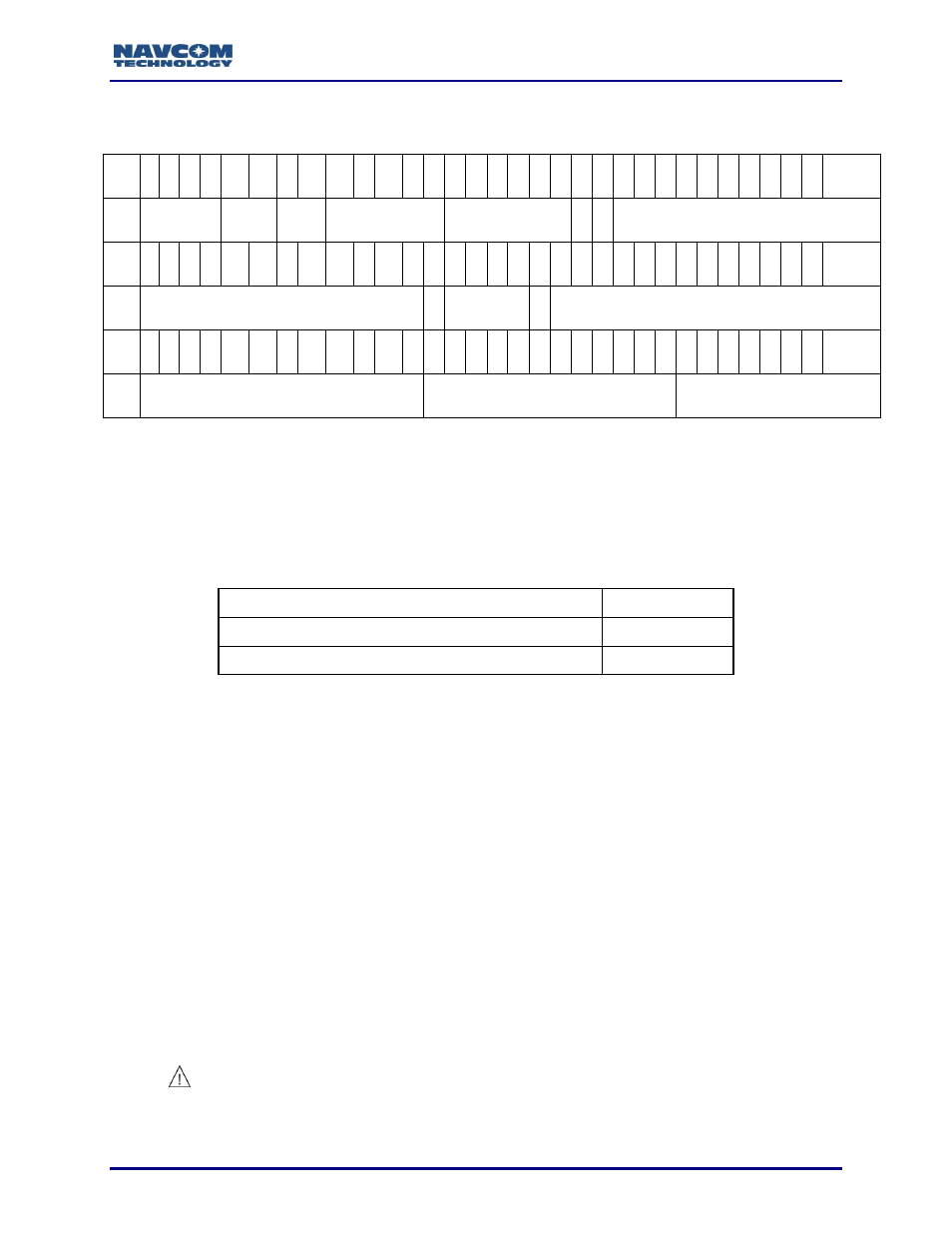Galileo ephemeris, Sbas ephemeris, Table 123: bit mapping of glonass string 1 – NavCom Sapphire Rev.J User Manual
Page 273: Table 124: sbas ephem1b binary message, N 2.19.4, O 2.19.3, N table 123

Sapphire Technical Reference Manual Rev. J
273
Table 123: Bit Mapping of GLONASS String 1
(S is the sign bit of the following field)
W0
3
1
3
0
2
9
2
8
2
7
2
6
2
5
2
4
2
3
2
2
2
1
2
0
1
9
1
8
1
7
1
6
1
5
1
4
1
3
1
2
1
1
1
0
0
9
0
8
0
7
0
6
0
5
0
4
0
3
0
2
0
1
0
0
S1
m
P2
P1
tk_h
tk_m
t
k
s
S
Vel[0]
W1
3
1
3
0
2
9
2
8
2
7
2
6
2
5
2
4
2
3
2
2
2
1
2
0
1
9
1
8
1
7
1
6
1
5
1
4
1
3
1
2
1
1
1
0
0
9
0
8
0
7
0
6
0
5
0
4
0
3
0
2
0
1
0
0
S1
Vel[0]
S
Acc[0]
S
Pos[0]
W2
3
1
3
0
2
9
2
8
2
7
2
6
2
5
2
4
2
3
2
2
2
1
2
0
1
9
1
8
1
7
1
6
1
5
1
4
1
3
1
2
1
1
1
0
0
9
0
8
0
7
0
6
0
5
0
4
0
3
0
2
0
1
0
0
S1
Frequency Number
(reserved field for other strings)
Pos[0]
KX
2.19.3 Galileo Ephemeris
TBD
2.19.4 SBAS Ephemeris
Table 124: SBAS EPHEM1B Binary Message
Data Item (73 Bytes)
Data Type
PRN (120
– 138)
U08
WORD 1 to 8 (SBAS type 9 message; 250 bits long)
U32
The SBAS type 9 message is 250 bits long. The MSB of the SBAS type 9 message
is transmitted first. It is saved in the MSB of WORD 1. The last bit of the type 9
message is saved in the LSB of WORD 8. Eight WORDs can hold 256 bits, so 6
bits of WORD 8 are not used. These 6 bits are in the MSB positions of WORD 8.
This message can be scheduled OnTime with a minimum interval of 60 seconds. When
scheduled OnTime, the whole set of ephemeris messages, which consists of multiple
messages each containing the ephemeris for one satellite, will be output at the specified
interval. Within the set, each ephemeris message will be output one second at a time.
EPHEM1B is a special case message. It can be output for the entire list of satellites
(tracked or not) or specified for a specific satellite. These two special cases are
typically used at base station startup or hub software startup in a network solution.
The ability to poll the receiver for a specific PRN’s ephemeris allows the network to
easily recover from data outages that might occur on an Ethernet link, for example.
The third (and normal usage) case is to schedule EPHEM1B “Onchange.” In this
mode, the receiver unpacks and passes on satellite ephemerides as they are
received from the satellite (the normal, ongoing operational condition).
When incorporated into an end-user program, do not poll the receiver for the
complete EPHEM1B list more than once every 60 seconds.
